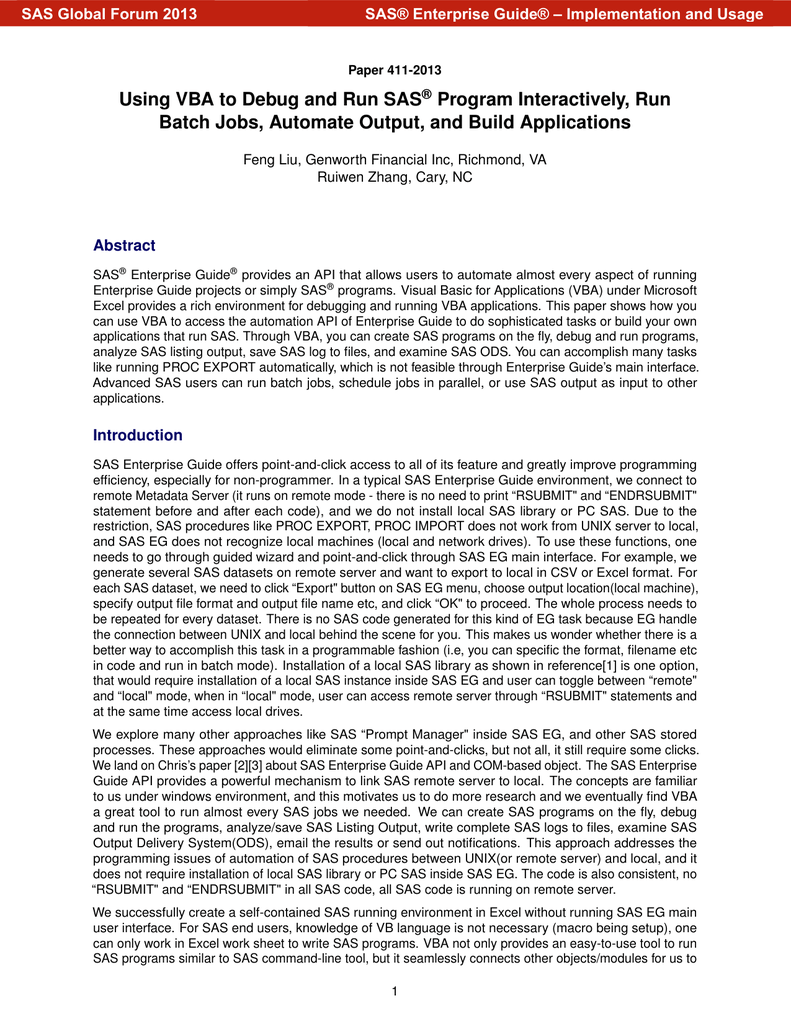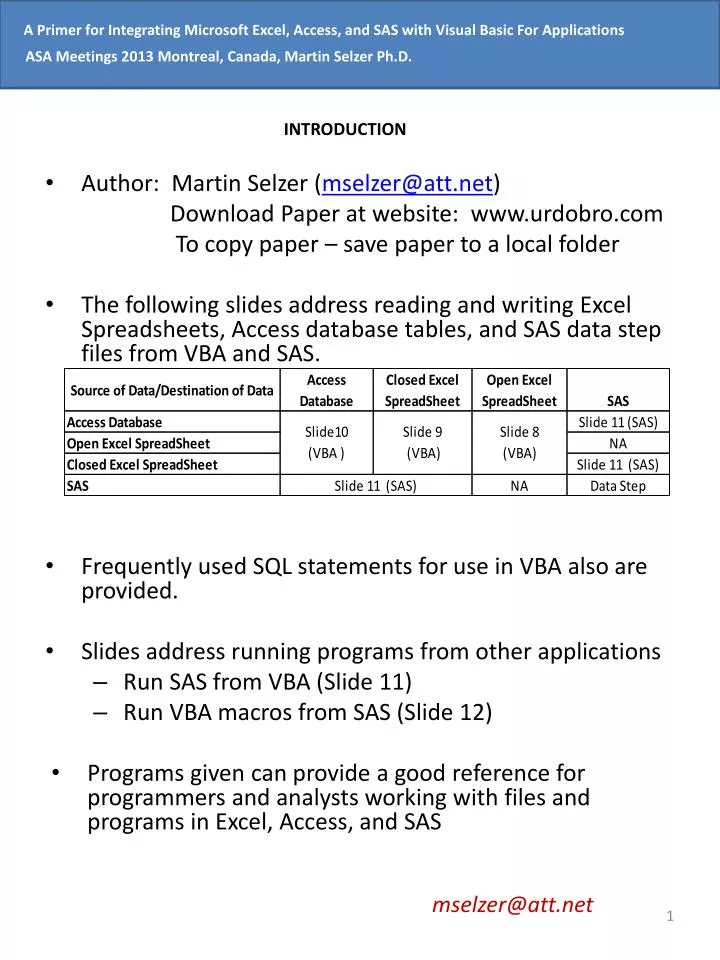

- #How to execute a sas program through excel vba on windows install
- #How to execute a sas program through excel vba on windows code
- #How to execute a sas program through excel vba on windows series
You can set a reference to the Access type library from any other ActiveX component and use the objects, methods, and properties defined in that library in your code. For example, you can use the Run method from an ActiveX component to carry out a Sub procedure that is defined within an Access database. This method is useful when you are controlling Microsoft Access from another application through Automation, formerly called OLE Automation. The arguments that should be passed to the Function or Sub specified in the Procedure argument.
#How to execute a sas program through excel vba on windows code
procedurename" If you execute Visual Basic code containing the Run method in a library database, Access looks for the procedure first in the library database, and then in the current database. If you are calling a procedure in another database, use the project name and the procedure name separated by a dot in the form: " projectname. The name of the Function or Sub procedure to be run. See ' Distributing Options to groups of Enterprise Guide Users' for more information on this topic.You can use the Run method to carry out a specified Microsoft Access or user-defined Function or Sub procedure. It is also possible to export and share the initialisation code defined through the options dialog to ensure every users Enterprise Guide session runs the same code. This would need to be recreated from project to project.Īs an extension to this topic, programmers may wish to investigate some of the global macro variables which Enterprise Guide automatically assigns during start-up (_SASSERVERNAME for example) which could be used to conditionally run different statements based on the active server. Other viable alternatives for defining autoexec processing would be to define an 'autoexec' process flow which runs as the first set of tasks within a project. This displays all of the code which Enterprise Guide has run during server start-up, including the custom initialisation code added.

This can be verified by viewing the 'Properties' of the connected server in the 'Server List' window and selecting the 'View Initialization Log.' button on the 'Software' tab. The advantage of this approach is that the code specified will run on connecting to any SAS server. Code can either be entered directly within here, or if a generic autoexec file is to be used, a %INCLUDE statement could be used to reference a separate program. When this is selected, Enterprise Guide executes all programming statements defined in the editor window displayed on selecting the 'Edit.' button. Selecting the 'SAS Programs' category reveals a check box labelled 'Submit SAS Code when server is connected'.

#How to execute a sas program through excel vba on windows series
Selecting, the 'Tools' menu followed by 'Options' displays a dialog containing a series of option categories in the left hand panel. There is however a simpler way to define initialisation code using Enterprise Guide. The default location for this in SAS 9.3 is typically 'C:Program FilesSASHomeSASFoundation9.3'.
#How to execute a sas program through excel vba on windows install
The only problem with this approach is that not every user will have access to edit this file.įrom a 'Local' SAS servers perspective, it is possible to submit code at initialisation by creating a file called 'autoexec.sas' within the SAS install location, and specifically within the sub-folder containing the SAS configuration file.

The 'appserver_autoexec_usermods.sas' file stored under the application server context can, for example, be used to supply initialisation instructions to any SAS client connecting to the server. The conventional way of submitting code from a SAS Application Server is through one of the many autoexec files which are invoked on server initialisation. In either case, the SAS 'server' in question is simply an individual SAS session which is still capable of running code at initialisation. That server could be a SAS Application Server running on a different physical machine to Enterprise Guide or it could be a 'Local' SAS server, located on the same physical machine. What perhaps isn't clear is how we go about doing the same thing using Enterprise Guide.Įnterprise Guide allows us to submit code on a SAS server. Most SAS programmers are familiar with the use of an AUTOEXEC file which allows us to AUTOmatically EXECute a program on SAS invocation.


 0 kommentar(er)
0 kommentar(er)
